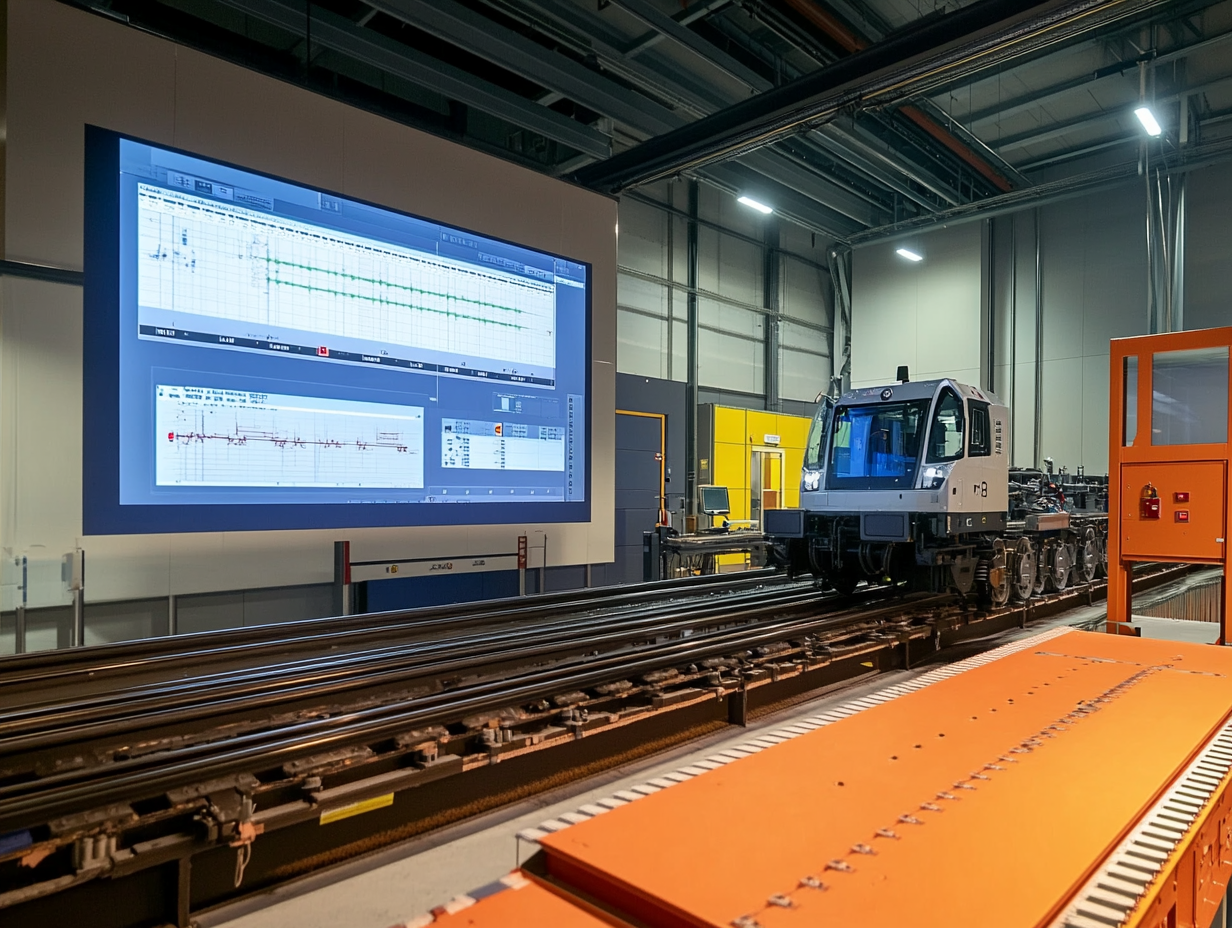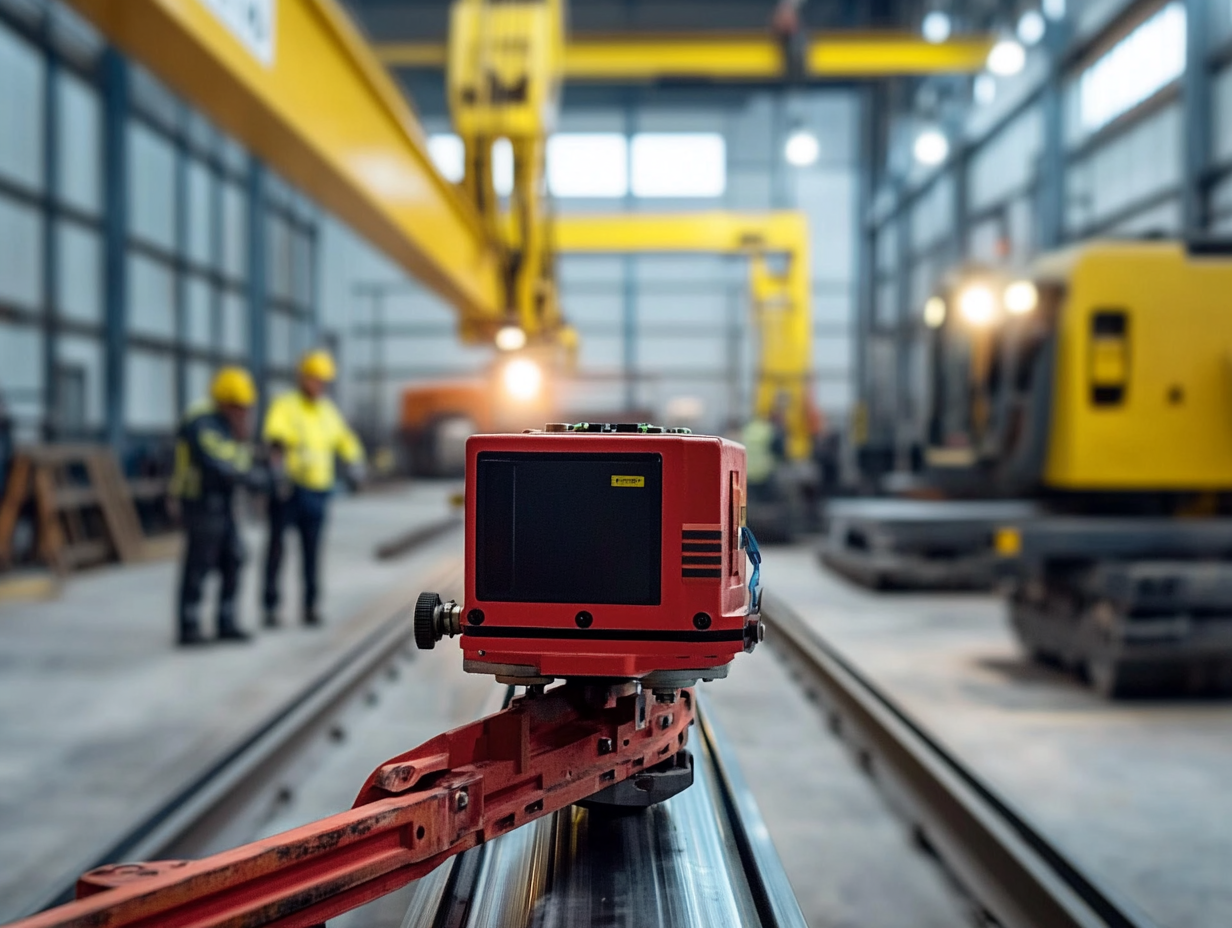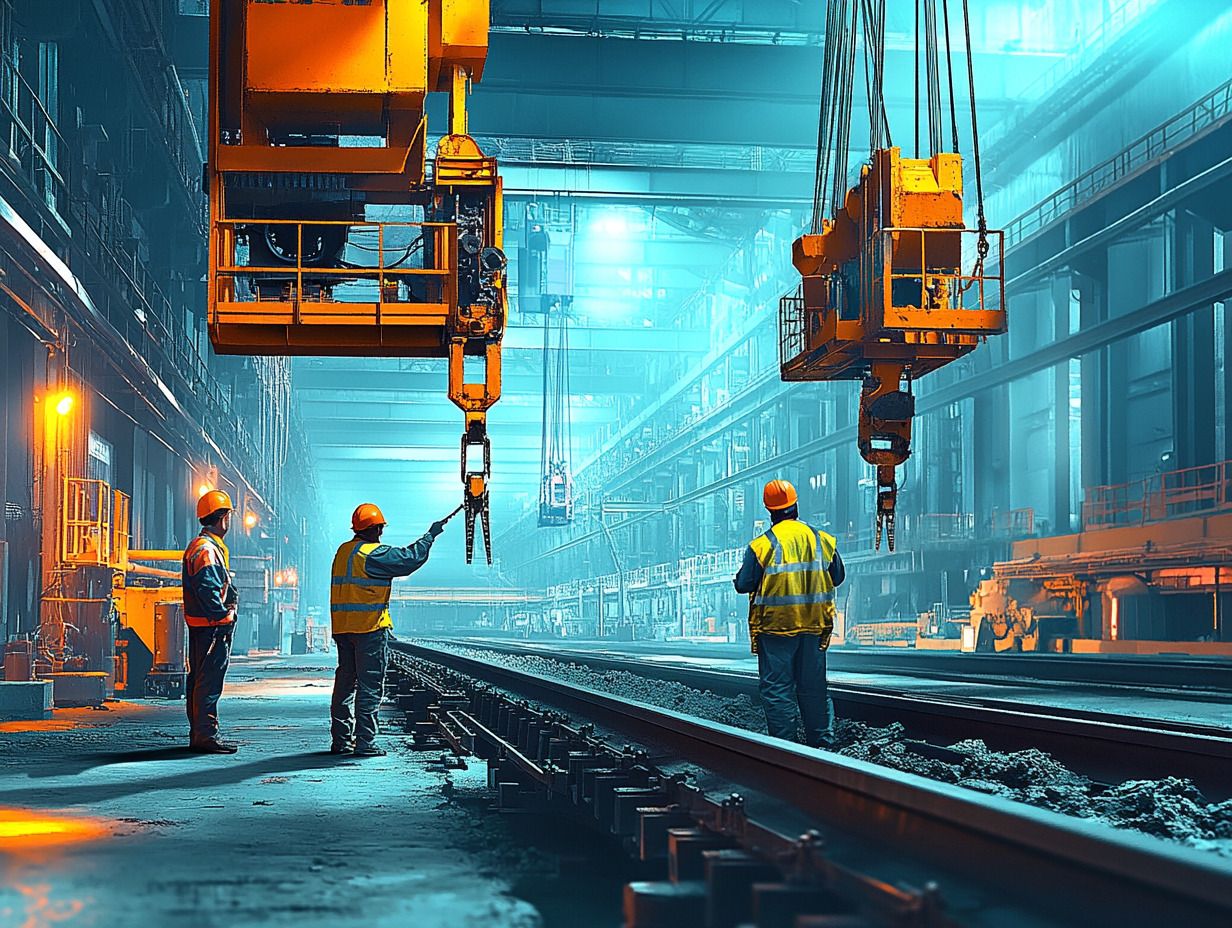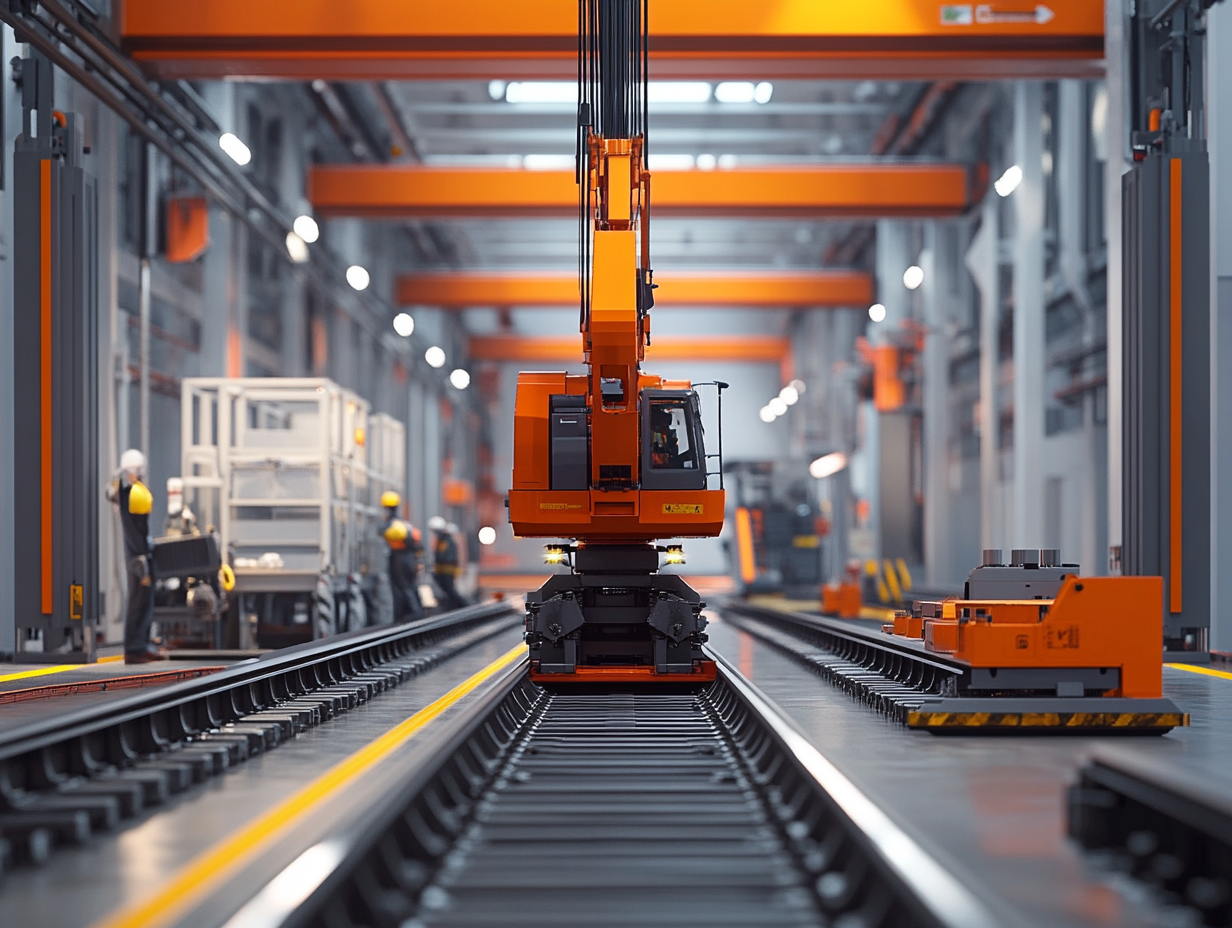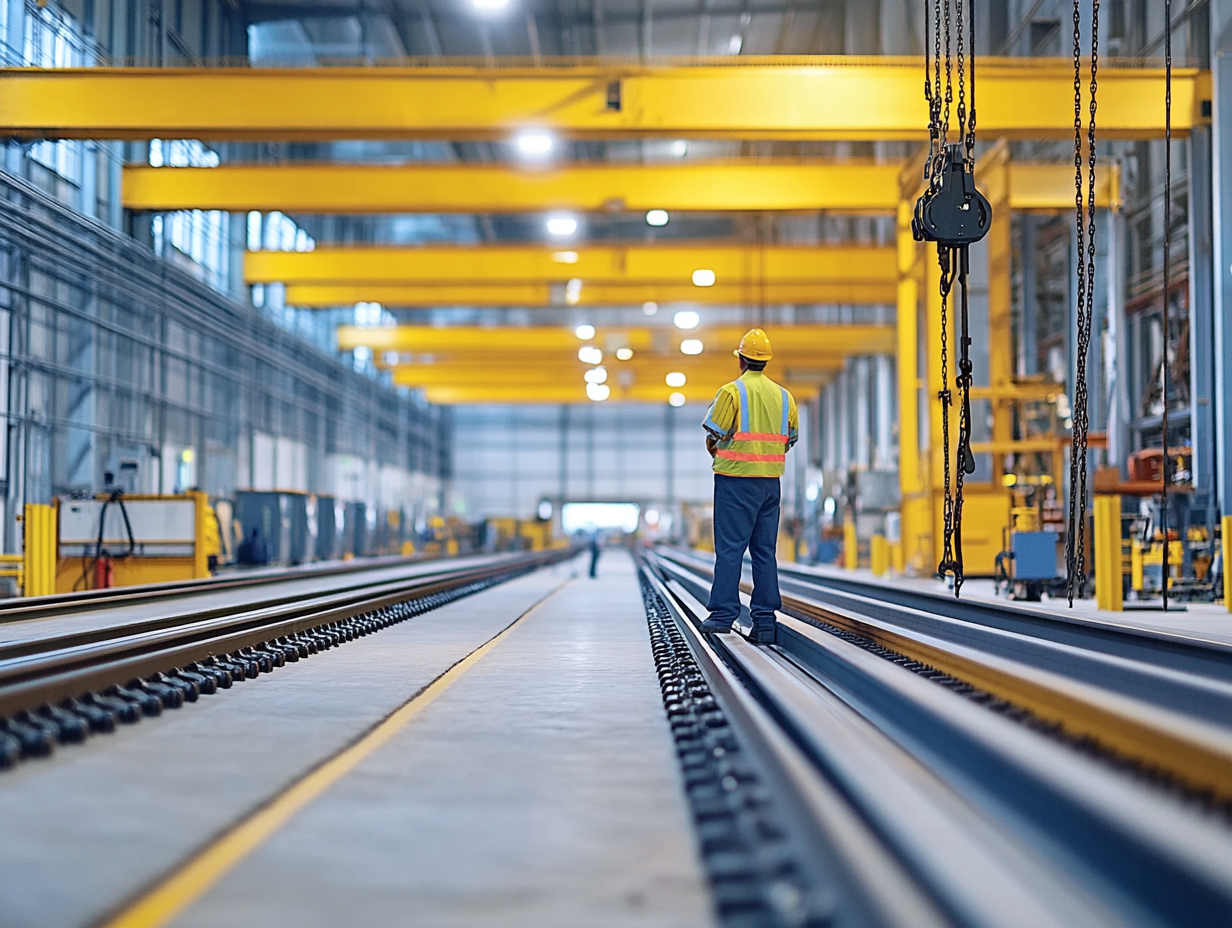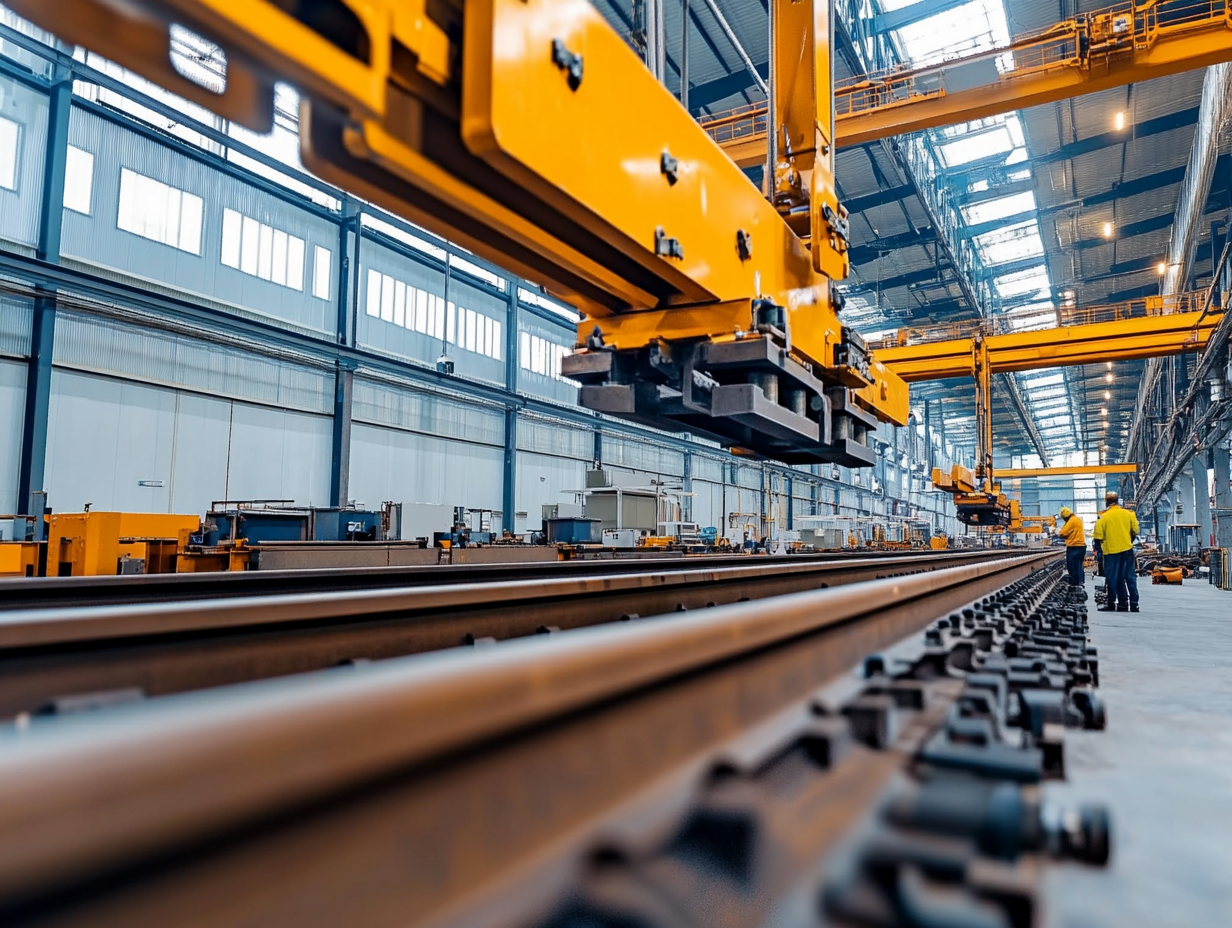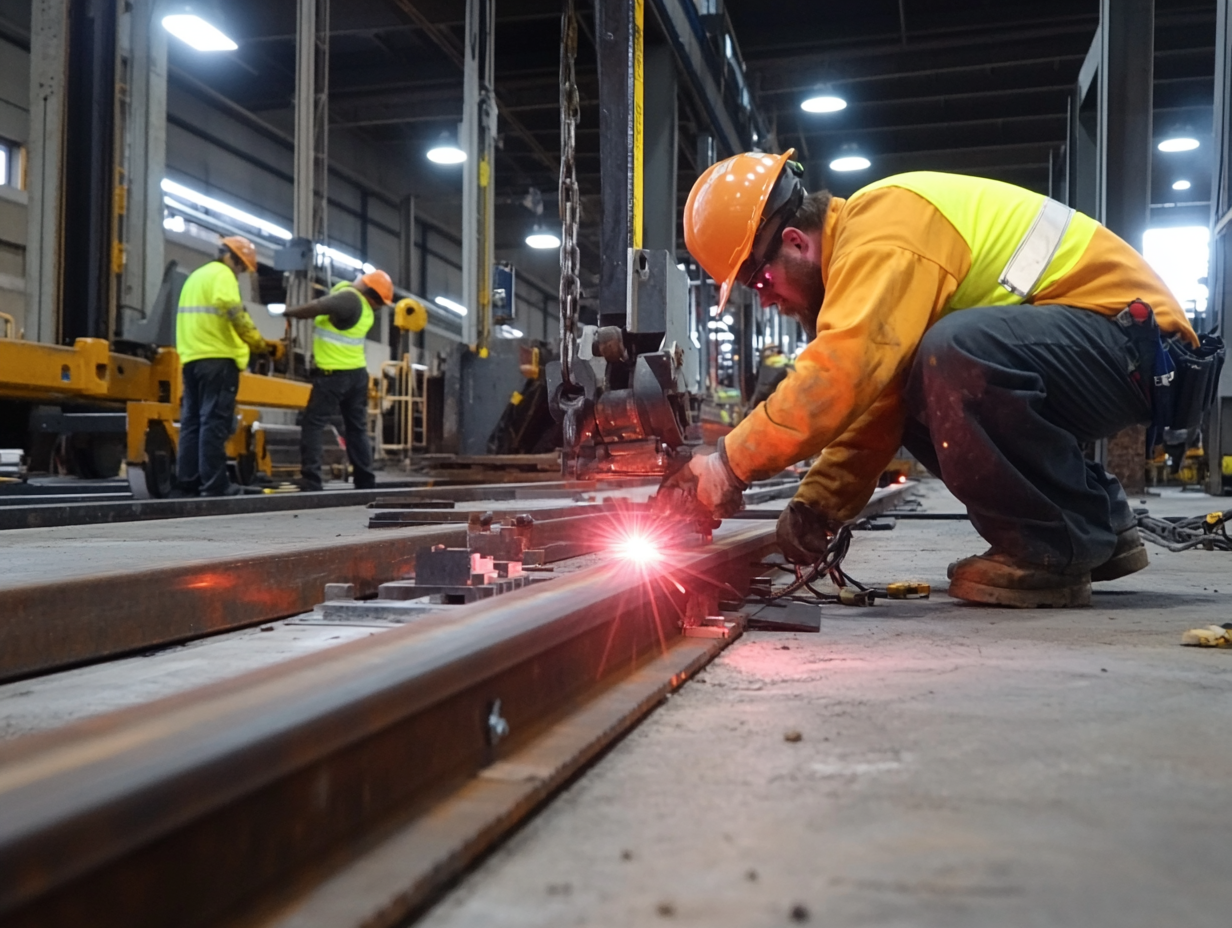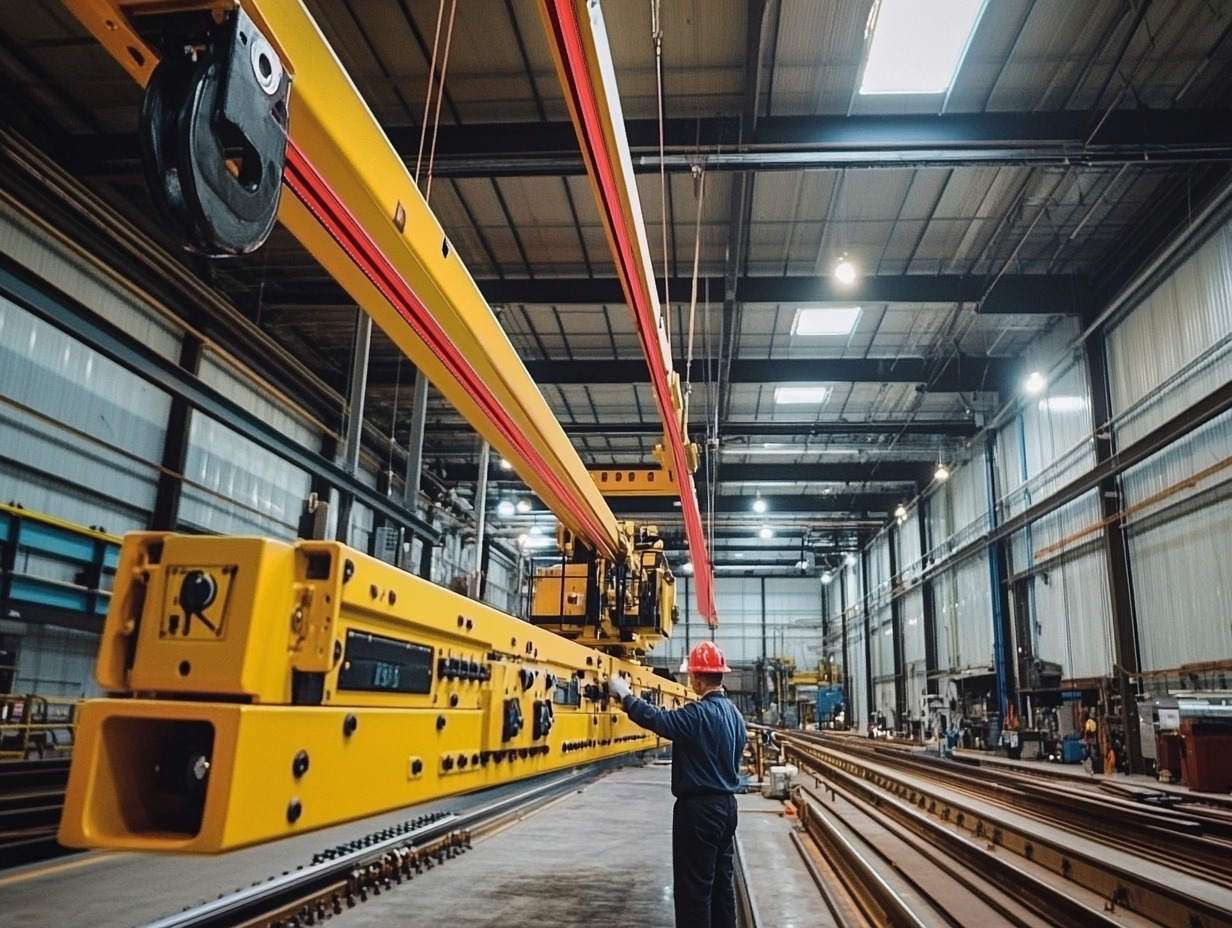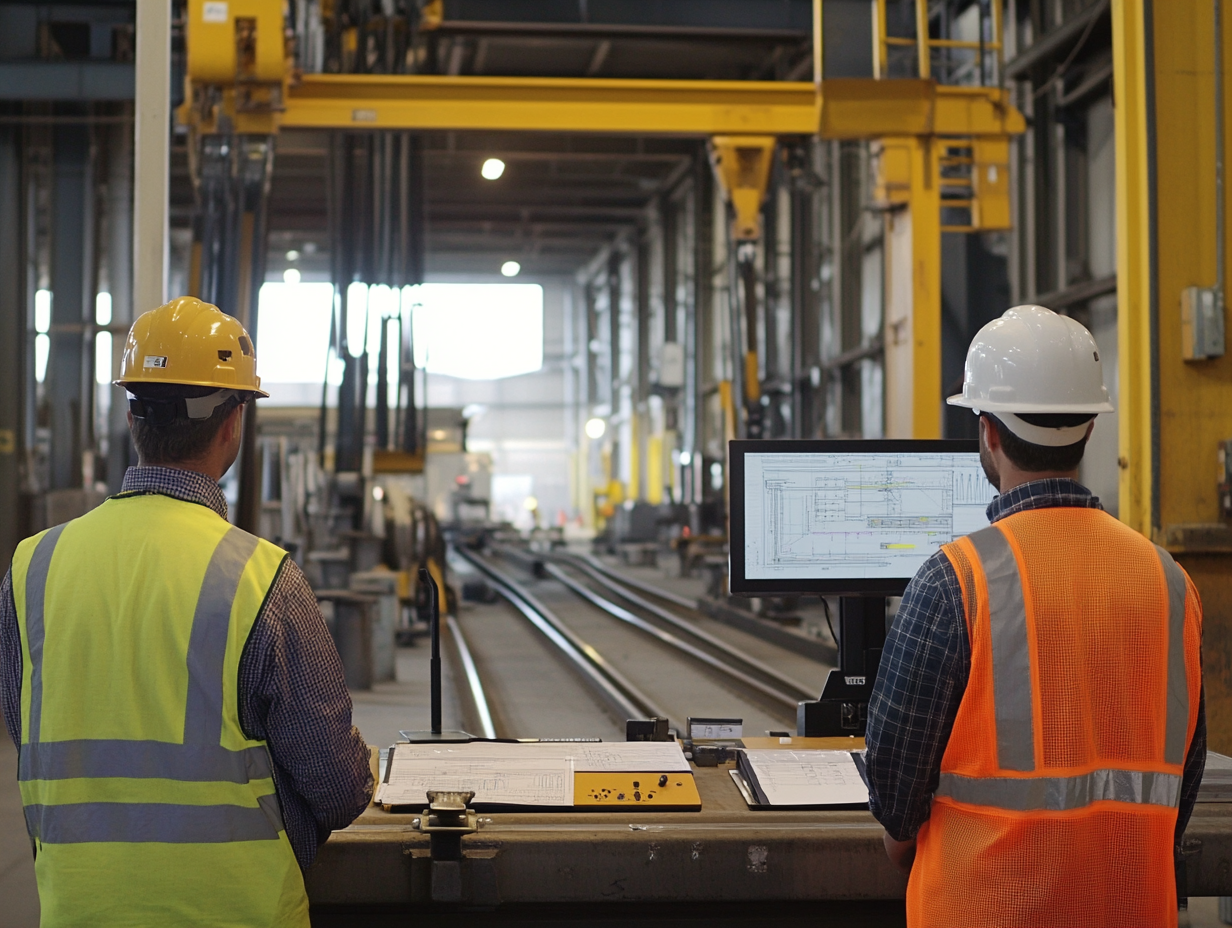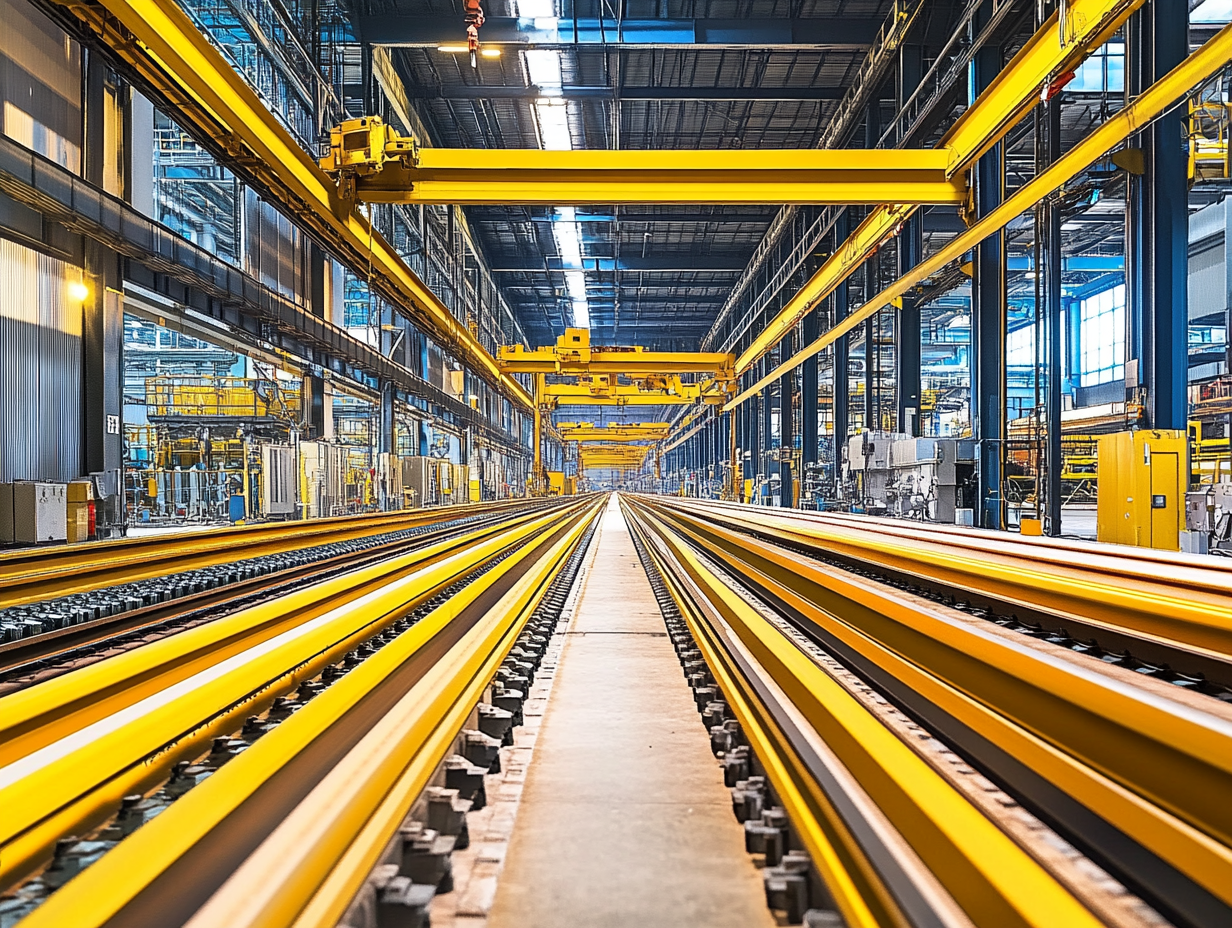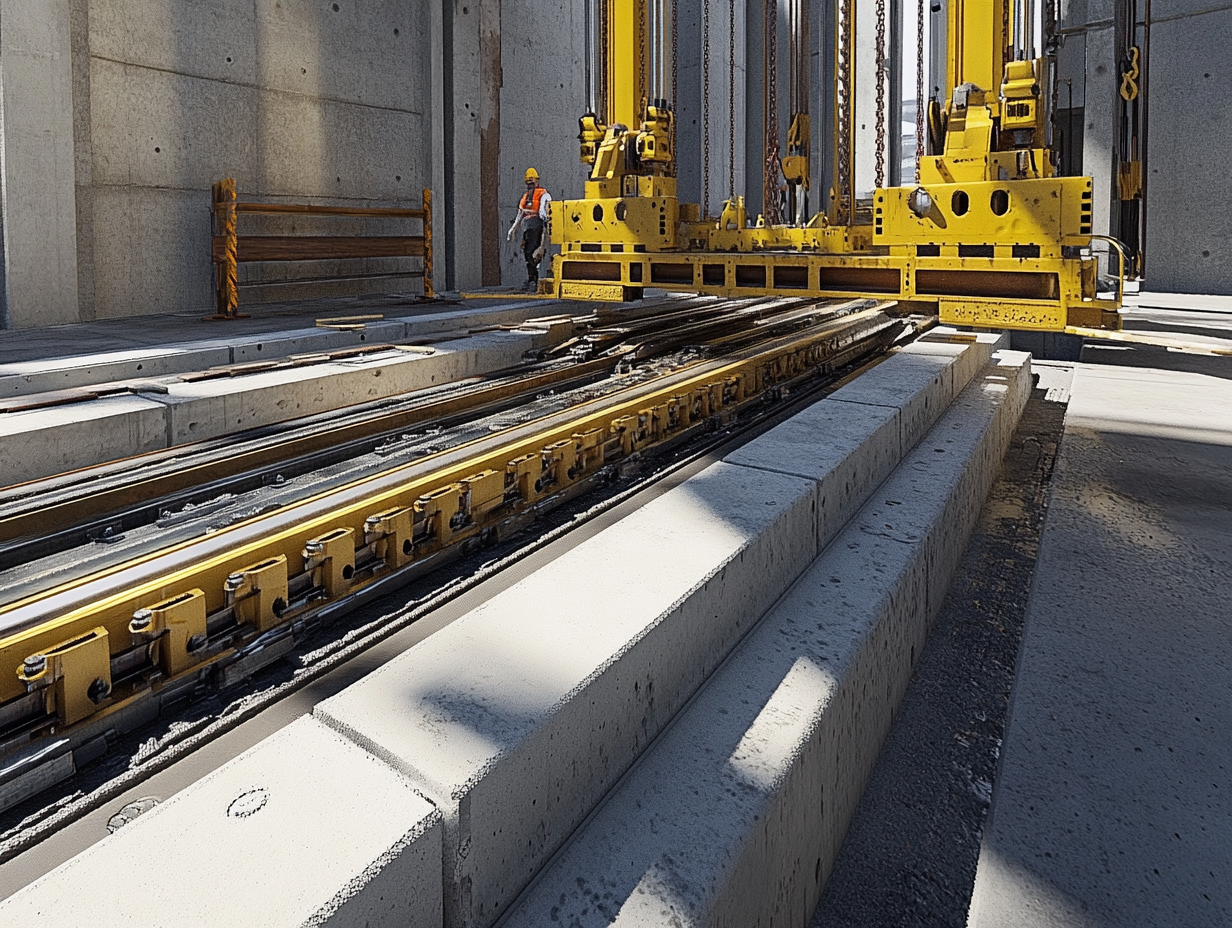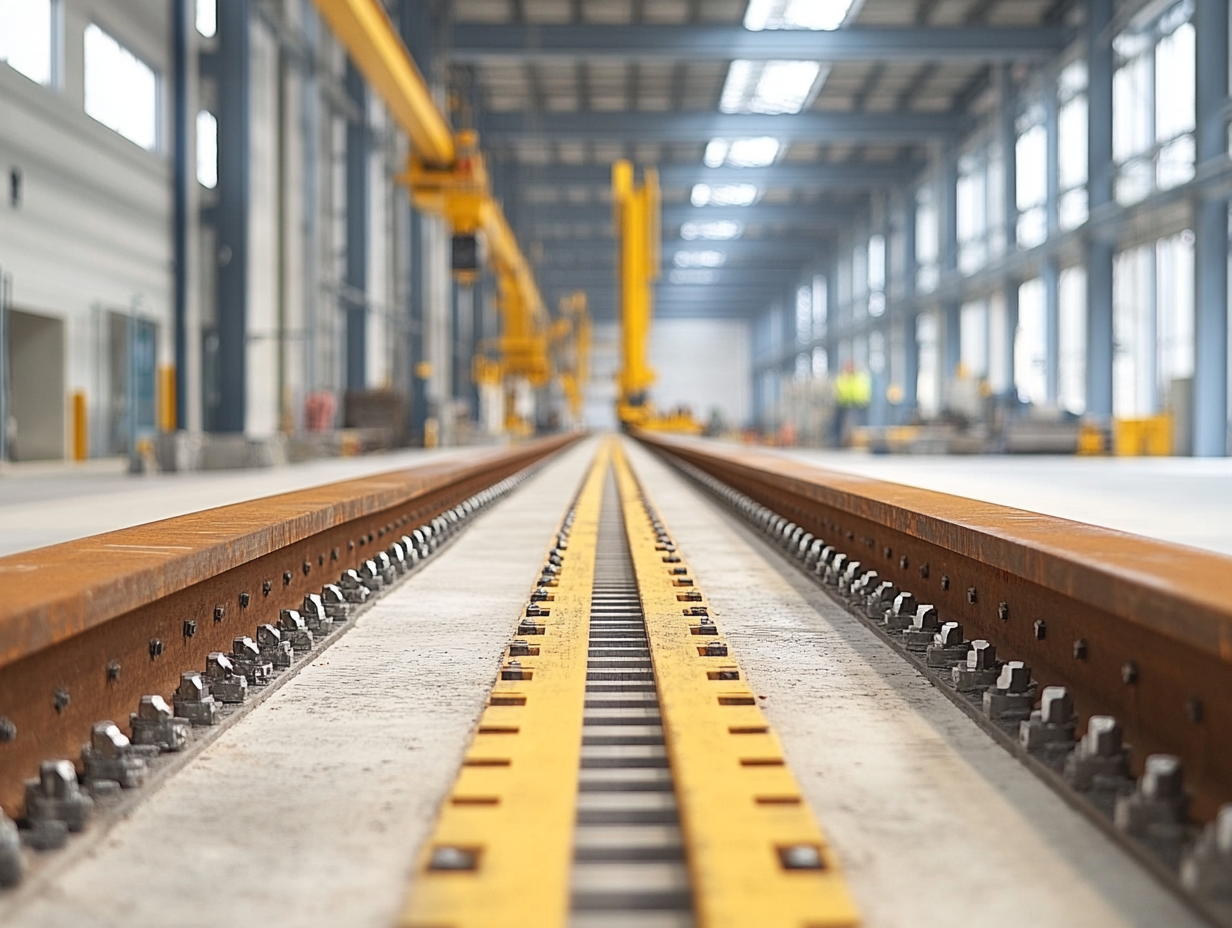The choice of rail profile significantly affects crane movement, load distribution, and long-term operational efficiency. Selecting the wrong profile can result in excessive wear, misalignment, and high maintenance costs. This blog explores how different rail profiles influence crane performance and what factors to consider for optimal selection.
Proper installation of crane track rails is essential for ensuring alignment, structural integrity, and long-term durability. Poorly installed rails can lead to misalignment, excessive wear, and increased maintenance costs. This blog explores the best installation techniques, welding methods, and industry standards to follow for optimal crane track performance.
Crane rails are subjected to continuous mechanical stress, heavy loads, and environmental factors, which can cause wear and deformation over time. Without proper management, these issues can lead to misalignment, increased maintenance costs, and safety risks. This blog explores the causes of rail wear, strategies to minimize deformation, and best practices for extending rail lifespan.
Selecting the right crane rail profile is essential for ensuring stability, load-bearing capacity, and durability in industrial operations. While DIN 536 A, DIN 536 F, and standard railway rails are commonly used, each has distinct design characteristics and applications. This blog explores their differences, advantages, and ideal use cases.
Flat bar crane rails, also known as laminated rails, are a widely used alternative to traditional crane rail profiles. These rails are particularly favored in light to medium-duty applications, offering flexibility and cost-effectiveness. However, they also come with specific limitations that must be considered when designing crane track systems. This blog explores the pros and cons of flat bar crane rails and their ideal applications.
Crane rail selection is a critical decision that directly impacts safety, efficiency, and long-term durability in industrial operations. Choosing the wrong rail can lead to premature wear, misalignment, and costly maintenance. This blog explores the essential factors to consider when selecting the right crane rail for your system.
Proper crane rail installation and bedding systems are essential for ensuring stability, durability, and reduced maintenance costs. Incorrect installation or improper bedding can lead to wear, deformation, and misalignment. This blog explores crane rail installation techniques, bedding systems, and key considerations for optimal performance.
Crane tracks must handle not only vertical loads but also lateral forces and torsion (twisting effects). Insufficient torsional resistance or uncontrolled lateral forces can cause rail deformations, crane instability, and serious operational issues. This blog explores how torsion is managed in crane tracks and the methods used to control lateral forces for optimal stability.
Crane tracks are subjected to heavy loads daily, making stability and fatigue analysis essential. Poorly designed crane tracks can lead to deformation, system failures, and costly downtime. This blog explores best practices for ensuring track stability and fatigue resistance.
Crane rails are designed to suit various industrial applications, and their proper selection directly impacts the performance, safety, and longevity of crane systems.
Crane tracks are engineering marvels designed to safely transport heavy loads. However, the reliability and durability of these systems depend heavily on the materials used and the design choices made.
Crane tracks are essential components of industrial systems, enabling the safe and efficient movement of heavy loads. The proper selection and standard-compliant design of crane rails are crucial for both performance and safety.


